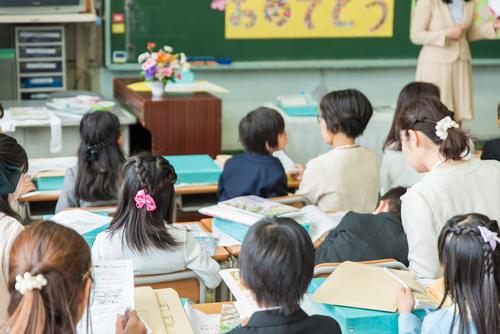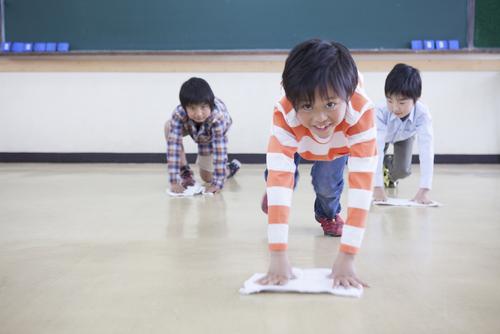It is often the case that things that are common in Japan are not common overseas. The same is true for schools. Not only are the education systems fundamentally different, but there are also times when you will feel differences in unexpected areas.
In this article, we'll thoroughly explain the characteristics of Japanese schools that may surprise people from overseas! We'll introduce four areas where differences are particularly noticeable. If you're interested in the school environment overseas, be sure to check it out.
school lunch
Japanese school lunches are said to be of very high quality worldwide. While this is commonplace in Japan, it is very rare for schools to provide meals that are nutritionally balanced and colorfully prepared by a registered dietitian.
In Japan, school lunches are not just for satisfying hunger, but are seen as part of school education, where students learn the following purposes: For this reason, some schools are developing lessons that go beyond the framework of "school lunches," such as using agricultural products they have grown themselves.
- Dining etiquette
- Healthy eating habits
- Food culture in Japan and its regions
- Promoting good health through proper nutrition
- Sociability and community spirit
- Respect for nature and the spirit of environmental conservation
- A spirit of valuing hard work
- Food production, distribution, and consumption
However, when we look at the situation regarding school meals overseas, there are countries where even if there is school lunch, students serve and eat themselves, or where they can decide their own menu for the day, and in these countries, students only eat what they like, so the nutritional balance tends to be unbalanced.
Furthermore, in most Western countries, students eat in cafeterias rather than in classrooms.
In addition, there are countries where school is only a half-day and there are no school lunches, and in countries where school is a full day, it is customary to go home to eat lunch.
Automatic promotion

In Japan, it is almost impossible to fail a grade during compulsory education. Students are automatically promoted to the next grade, regardless of the number of days they attend or how poor their grades are. This system is accepted as normal in Japan, but it seems shocking to many people in Western countries.
Poor grades mean that students have not understood the material they learned in that grade. If they move up to the next grade without understanding it, it is natural that they will not be able to understand the material. In Western countries, students are not automatically promoted from the lower grades. If students get poor grades, they may have to repeat the year.
On the other hand, it can be said that the system of skipping grades is unique to overseas countries. A distinctive feature is the widespread idea of "giving each child an education that suits them." It can be said that while Japan values "harmony" among all children, overseas countries value "individuality."
textbook

Many people have probably had the experience of being handed a huge pile of textbooks after the entrance ceremony and struggling to carry them all home. I'm sure everyone has had the experience of stuffing the textbooks for the subjects on the next day's schedule into their bag. However, this is also very rare when viewed from a global perspective.
In America, it is common for students in the lower grades not to have textbooks, and instruction is tailored to each student's level, with each student reading handouts or books prepared by the teacher. This means that even if students are in the same classroom, they are not all learning the same things.
In the upper grades, students will need to use textbooks, but they are "rented" from the school. Since they are rented, they cannot take them home or write in them. In America and Australia, textbooks are books that are only used during class.
cleaning

In Japan, there is always a "cleaning time," but it doesn't exist overseas. Cleaning staff are hired, and it's common for children to clean up after coming home from school. Apparently, people overseas find it quite shocking to see children cleaning their own classrooms, hallways, and toilets, a common sight in Japan.
This reflects the attitude of Japanese schools that, like school lunches, cleaning is a part of school education. The goal is that by cleaning up themselves, students will develop an awareness of taking good care of things and be mindful of keeping public places clean. In schools overseas that have cleaning staff, many students think it's natural not to pick up food scraps or other debris on the floor, because "there's someone who will clean up after them."
The "cleaning time" that Japan has introduced is currently a hot topic among educators overseas, with some schools actually introducing it. However, in other countries where children's independence is highly valued, forcing them to clean can be considered child abuse. While Japanese education naturally emphasizes doing what teachers tell you, in other countries where education emphasizes being able to say no to authority, the reality is that "cleaning time" has been met with strong mixed reactions.
summary
There are probably many people who attended Japanese schools without any doubts, but after learning about the perspectives from overseas that we have introduced today, they have been forced to reconsider their views. From a global perspective, Japanese school education is said to be excellent. However, it is also true that there are areas where other countries excel. It would be wonderful if we could embrace the strengths of each other and create an even better education system.
In addition to the points we have introduced here, there are other differences between schools overseas and Japan. Please do your own research and discover the good points of each.
This article has been partially re-edited by KARUTA from an article originally published on "Nihongo Biyori."
Any unauthorized reproduction or use of the contents, text, images, illustrations, etc. of this website is strictly prohibited.
